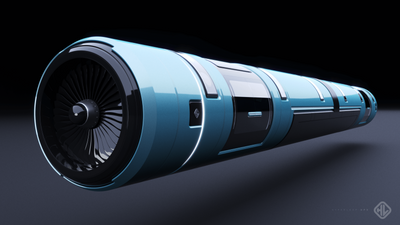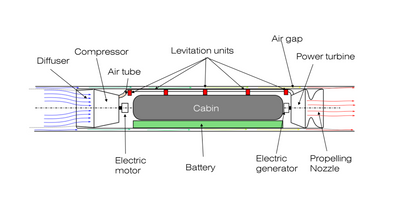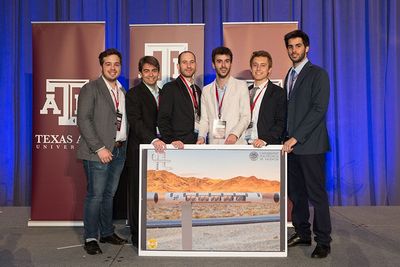Hyperloop Makers UPV, Universitat Politecnica de Valencia. SpaceX Top Design Concept winners


- Institution: Universitat Politecnica de Valencia
- ESTECO Software Solution: modeFRONTIER
- Benefits:Select the optimum design in terms of travel experienceMaximize energy efficiency while accelerating design iterations and development time
modeFRONTIER helped the team select the optimum design in terms of travel experience, maximizing energy efficiency while accelerating design iterations and development time.
The Hyperloop Makers UPV team from the Universitat Politécnica de Valencia was awarded the Top Design Concept and the Propulsion/Compression Subsystem Technical Excellence Awards at the 2016 SpaceX international challenge. The goal of the competition, launched by SpaceX CEO Elon Musk, is to perfect its revolutionary land transport system, driven by compressed air and able to connect Los Angeles and San Francisco in 30 minutes. Whereas the majority of the competing teams opted for passive magnetic levitation or designing the passenger pod suspended on air bearings, Hyperloop UPV developed a system that enables levitation through the magnetic attraction of the pod to the top of the tube. This rail-free solution saves up to 30% on Hyperloop tube construction costs.
"modeFRONTIER enabled us to obtain a family of optimum solutions for a range of inputs in a mere fraction of the time."
Challenge
The engineering challenge consisted in providing the base design for a 30-passenger cabin travelling as fast as possible through a vacuumed tube.

Solution
The technological solutions, in terms of comfort for the travelers subject to such high acceleration and cruise speed, were investigated by the team, assisted by advanced multiobjective optimization techniques. The computations related to the acceleration and cruise phase were set up in Excel and integrated into the modeFRONTIER workflow. The design variables mainly related to the compressor and the turbine (pressure ratio and discharge velocity) were automatically adjusted by the software to optimize the output results: acceleration time, specific energy required, pod mass and travel speed.
Benefits
“The effects of modifying even a single variable were, at best, difficult to explain as the physical models regarding the behavior of the system were highly interconnected and interdependent. With a traditional approach, this fact would have lead to a slow and difficult system optimum. modeFRONTIER on the other hand, enabled the team to obtain a family of optimum solutions for a range of inputs in a mere fraction of the time” said Germán Torres, Technical Director at Hyperloop Makers UPV Team. In terms of specific energy per passenger/km, the results show the pod consumes ten time less energy and travels ten times faster than traditional road transport. “We are developing a small levitation demonstrator for the next phase of the SpaceX International Challenge”, continued Torres, “in fact we plan use modeFRONTIER again to optimize the new Hyperloop design proposal”.


Hyperloop UPV is a team of Spanish students from the Technical University of Valencia, gathered around the objective of designing the Hyperloop, a futuristic train concept that could travel at more than 1000 kmh with the use of renewable energies. After taking part in the competition organized by Elon Musk’s SpaceX in Texas in January 2016, they were awarded two prizes, the “Top Design Concept” and “Best Propulsion Subsystem” in a competition with over a hundred other teams from some of the most prestigious universities in the world (MIT, Standford, Purdue, UC-Berkeley, TU DELFT...). UPV Hyperloop was one of only 3 European teams that received an award.


